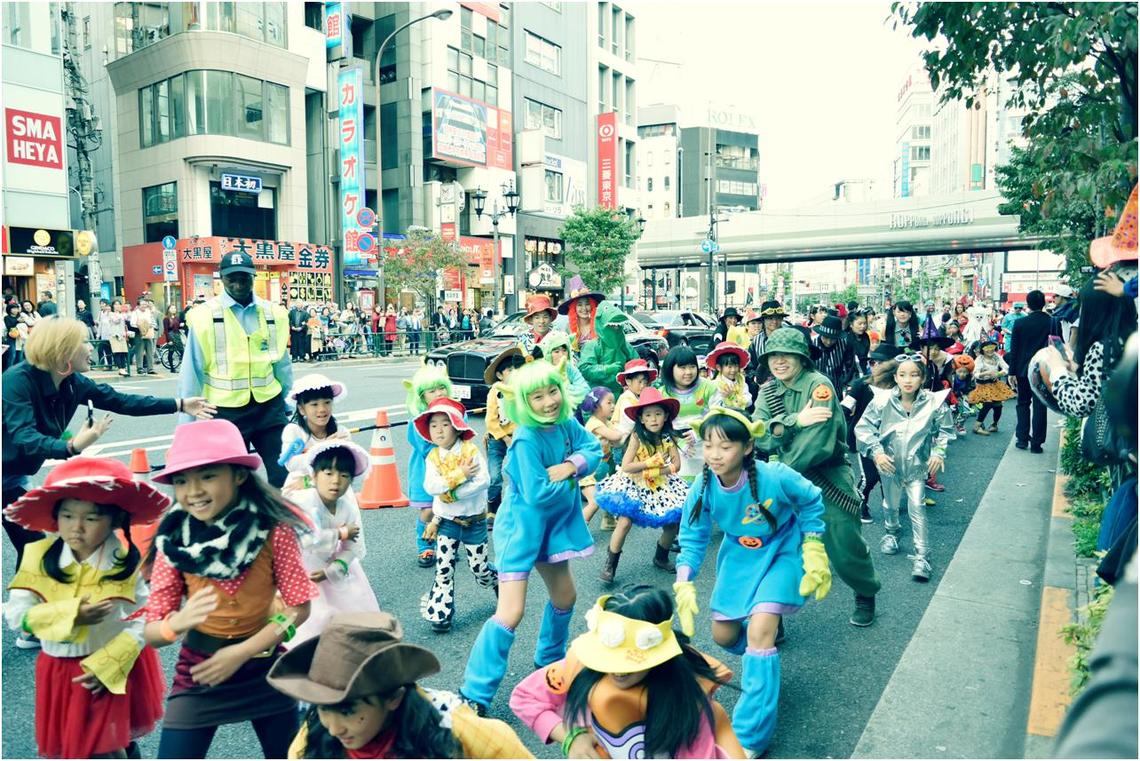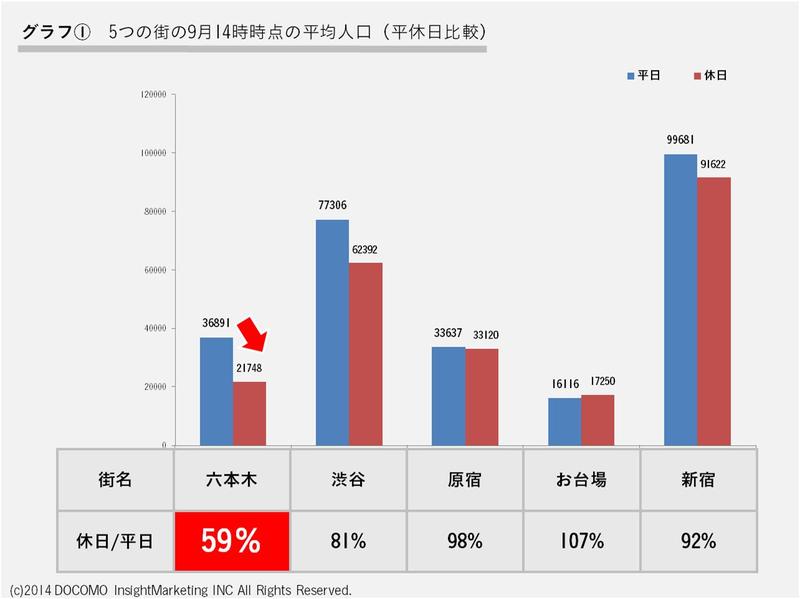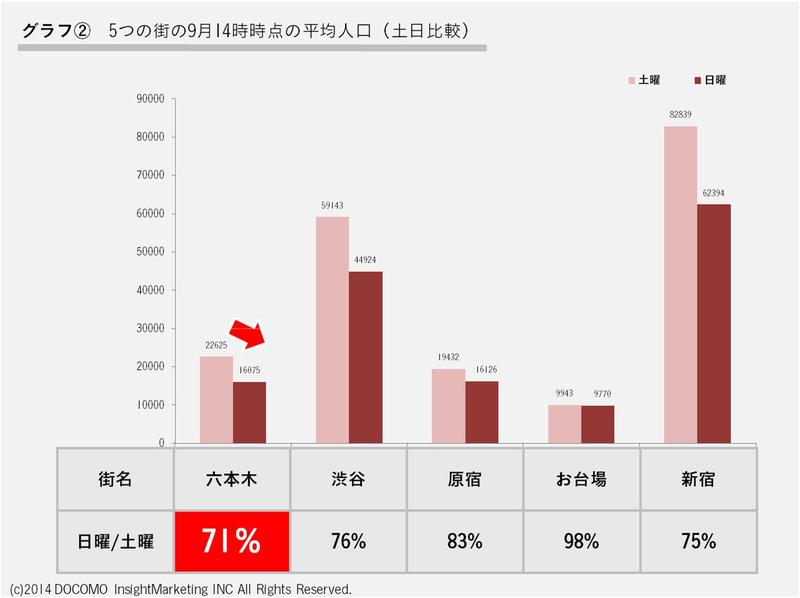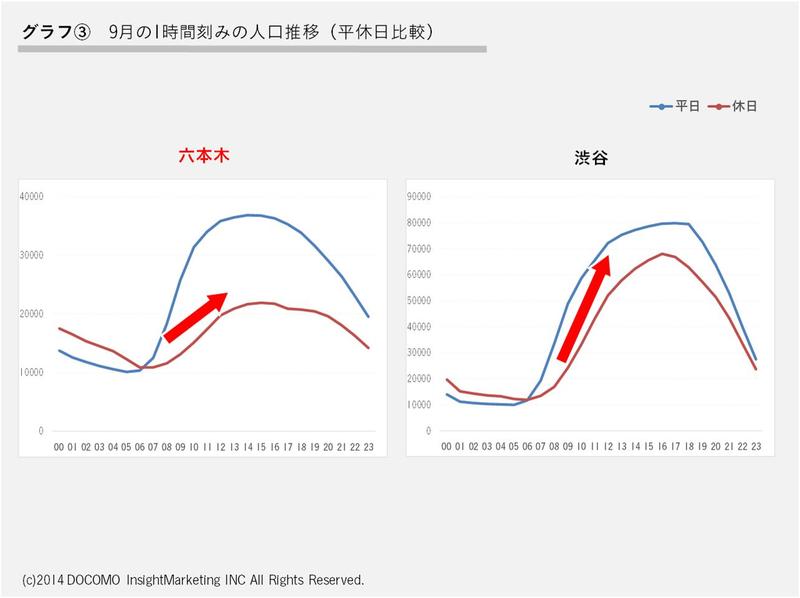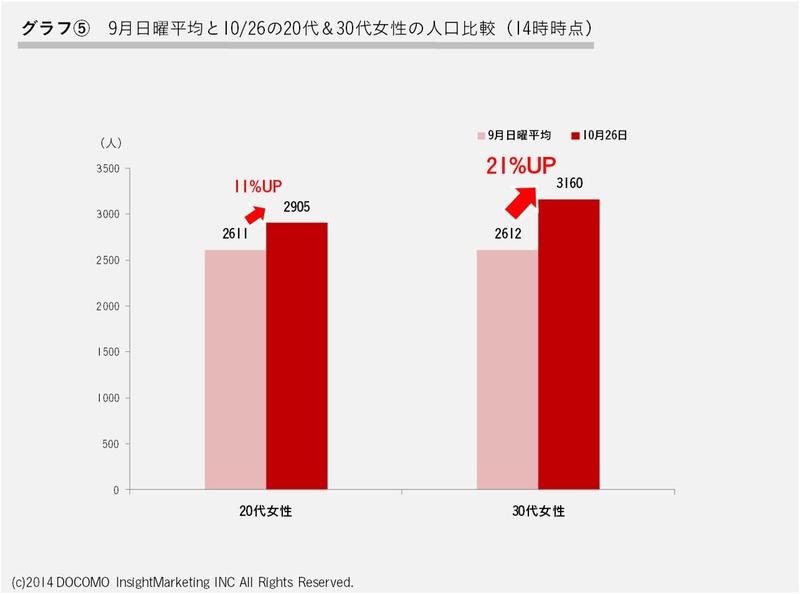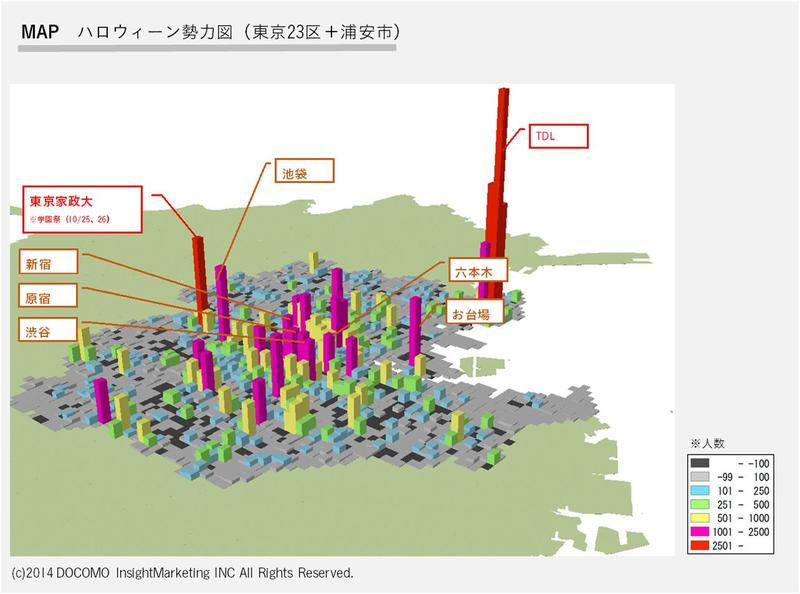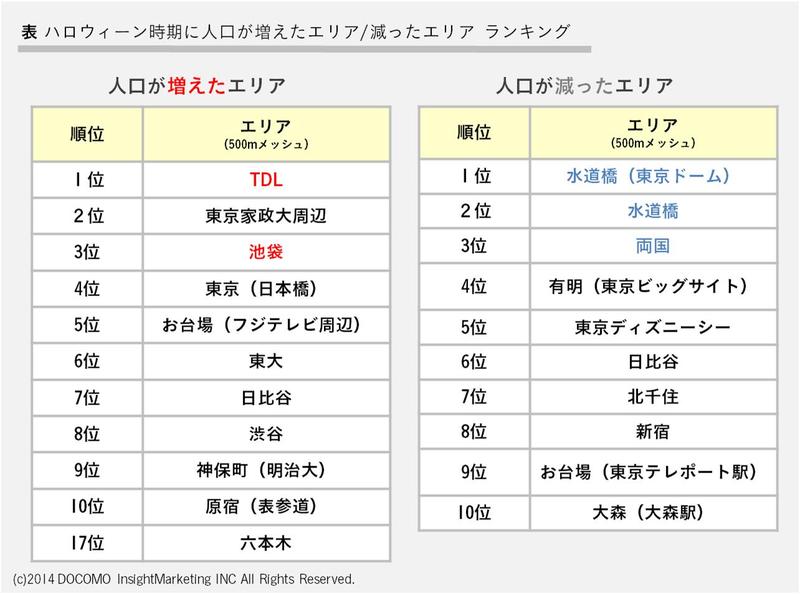Note: This website was automatically translated, so some terms or nuances may not be completely accurate.
Halloween Through Data. ~Visualizing the Buzz with Mobile Spatial Statistics~
Hello, I'm Hayata Yoshikawa.
While the use of big data has been emphasized for some time, one area poised for significant growth is "location data." We have been engaged in marketing support utilizing location data for several years. In this article, we will use Mobile Spatial Statistics (※1) provided by DOCOMO Insight Marketing to examine this year's Halloween boom through data, focusing primarily on the results of the Roppongi Halloween event, ROPPONGI HALLOWEEN (※2).
Incidentally, ROPPONGI HALLOWEEN was Roppongi's first citywide Halloween event, held on Sunday, October 26, 2014, from 11:00 AM to 6:00 PM, organized by the Roppongi Shopping District Promotion Association. It featured a Market Street with food courts, sponsor booths, and merchandise sales, as well as a dance parade winding its way from Roppongi-dori to Gaien Higashi-dori and Seijōki-dori.
|
|
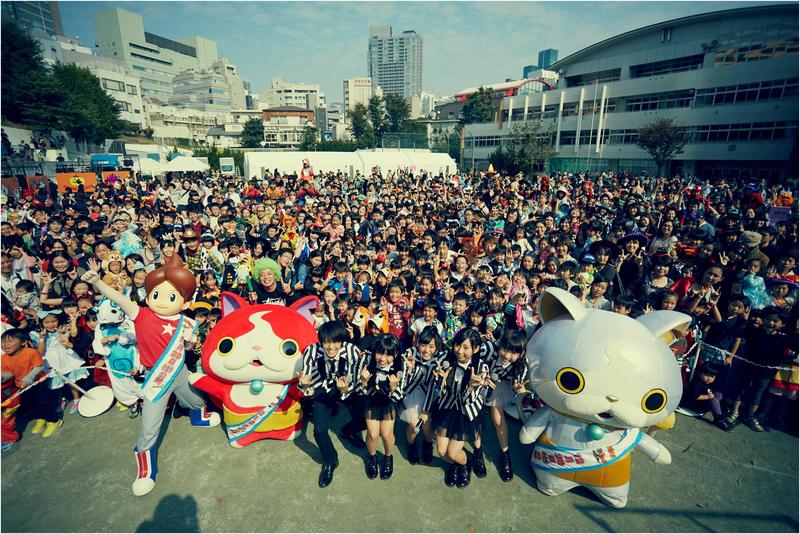 |
This event originated from the Roppongi Shopping District Promotion Association's vision to transform Roppongi into a destination not only for office workers after work but also for families on weekends.
So, we looked at the data to see what kind of town Roppongi really is and how many people this event drew. Furthermore, for this year's Halloween, which was projected to generate a record-high economic impact of 110 billion yen, we analyzed which areas in Tokyo successfully drew crowds and which did not, creating a Tokyo Halloween influence map.
Roppongi struggles to attract crowds on holiday afternoons.
First, to gauge Roppongi's baseline street power, we compared and analyzed data from September 2014 (the month before Halloween) for several relatively large central Tokyo neighborhoods: Shibuya, Harajuku, Odaiba, and Shinjuku. Please look at Graph ①.
This shows the population of each area at 2 PM. We discovered through analyzing various areas that 2 PM is the time when areas reach their population peak.
Shibuya and Shinjuku are clearly big cities with particularly large populations. Compared to them, Roppongi has a somewhat smaller population.
What's noteworthy here is the weekend population. Comparing weekend populations to weekdays (weekend/weekday), Roppongi's value is extremely low. While weekdays are bustling with office workers, fewer people seem to go out to Roppongi on weekend afternoons compared to other areas.
Graph ② breaks down the weekend further into Saturday and Sunday for analysis.
This graph shows that all areas attract fewer people on Sundays than on Saturdays. This likely reflects people holding back on going out to prepare for work the next day. Among these five areas, Roppongi has the worst Sunday/Saturday ratio, indicating it struggles to attract people on Sundays.
Now, let's look at it from a slightly different angle. Take a look at Graph 3.
This graph shows the average population trends for September, broken down by hour until 11 PM.
What's noteworthy here is the way the holiday peak rises. While Shibuya sees a sharp increase in population from morning to afternoon, Roppongi's population gradient is much gentler. Incidentally, compared to Harajuku, Odaiba, and Shinjuku, Roppongi's population gradient was also gentler. Viewed this way, we can see that its holiday crowd-drawing power is weak.
So, Roppongi, with its weak holiday crowds, especially on Sundays—could the ROPPONGI HALLOWEEN event on Sunday, October 26th, really draw people in?
Roppongi as a daytime destination overflowing with families.
Let's compare the hourly population trends from earlier with the average Sunday population in September and the population on the day of ROPPONGI HALLOWEEN. Please look at Graph ④.
As you can see, compared to a typical September Sunday, October 26th (Sunday) showed higher population levels at all times, with a peak increase of approximately 12% recorded at 2:00 PM. This clearly indicates that ROPPONGI HALLOWEEN boosted the population. My estimates suggest the estimated attendance during the event's operating hours from 11:00 AM to 6:00 PM reached approximately 82,000 people (*3).
Furthermore, the population increase from 12:00 AM to 4:00 AM on October 26 (Sun) was also quite high, indicating the event remained lively throughout the night.
Furthermore, using mobile spatial statistics allows us to determine gender and age group based on mobile phone subscriber information. We examined the attributes of visitors to Roppongi at 2 PM on a Sunday in September and on Sunday, October 26th. Since one of the event's objectives was to increase family attendance, we specifically looked at the population of women in their 30s, who are assumed to include many mothers with children. For comparison, we also looked at women in their 20s. Please see Graph ⑤.
Compared to a Sunday in September, the Halloween event day saw a higher number of women in their 30s, suggesting an increase in visitors to Roppongi with children. This indicates the event successfully attracted families.
Therefore, ROPPONGI HALLOWEEN can be considered a successful event for attracting families to the Roppongi area.
Now, let's broaden our perspective and examine the overall Halloween crowd-drawing power across Tokyo.
The winners for Halloween were Disneyland and Ikebukuro.
To assess Halloween crowd-drawing power across areas, we divided the Tokyo metropolitan area into 500m grids. We calculated the difference between the average population at 2 PM during the Halloween period (October 25, 26, 31) and the average population at 2 PM on a holiday in September, then mapped the results. Please see Map ① below. Areas are color-coded based on population difference.
This map clearly shows which areas successfully leveraged Halloween to attract visitors and which did not.
Roppongi is colored pink, indicating it is one of the areas that successfully leveraged Halloween. The three areas showing particularly increased population during Halloween are TDL, the Tokyo Kasei University area, and Ikebukuro. Considering that Tokyo Kasei University happened to hold its school festival during this period, which is not purely due to Halloween's effect, it seems fair to say that TDL, which holds Halloween events every year, and Ikebukuro, which held a city-wide Halloween costume event, are the two strongest players for Halloween.
Furthermore, examining the top areas experiencing population increases and decreases during Halloween yields the chart shown.
Looking at this, we can see that areas like Odaiba and Shibuya also effectively leverage Halloween. On the other hand, areas around Tokyo Dome, Suidobashi, and Ryogoku show weaker crowd-drawing power during Halloween. While factors like professional baseball influence Suidobashi, leveraging Halloween in these areas may become a challenge going forward.
So, what do you think? Using mobile spatial statistics reveals facts that were previously invisible, now visible through numbers.
Location data becomes a decision support system.
Thanks to the evolution of location-based tools like base station data and GPS, location information has shifted from primarily "first-person perspective personal use" (where individuals know their own location) to enabling "third-person perspective social use" (where everyone can see everyone else's movements).
While this case study analyzed events and cities, I believe location data can be applied beyond events to various fields like disaster prevention, logistics, and urban development. By making people's locations visibly real, it becomes a "decision support system" influencing everything from critical business decisions and casual outing choices to saving lives during disasters.
We plan to continue regularly sharing insights utilizing "Mobile Spatial Statistics." Thank you for reading to the end.
*1 Mobile Spatial Statistics refers to population statistical information created using the NTT DOCOMO mobile phone network system.
※2 Survey areas were set as a 500m radius centered on each station.
※3 Calculated assuming an average event stay of 3 hours and that half of attendees came with one child. Total: 81,740 people. Also utilizes Dentsu Inc.'s original survey "d-camp2014".
Contact: Dentsu Inc. Human Flow Lab contact@hitononagarelab.jp
Was this article helpful?
Newsletter registration is here
We select and publish important news every day
For inquiries about this article
Author

Yoshikawa Hayata
Dentsu Inc.
Future Creative Center
Group Creative Director
After working in the Media and Marketing divisions, I now serve in the Creative Division. My mission is to enhance corporate value for all stakeholders by redefining purpose, planning brand communications, developing initiatives across business, recruitment, ESG, and IR domains, and designing internal activation programs. I have received over 100 domestic and international awards, including the Japan Marketing Grand Prix and Cannes Lions.
